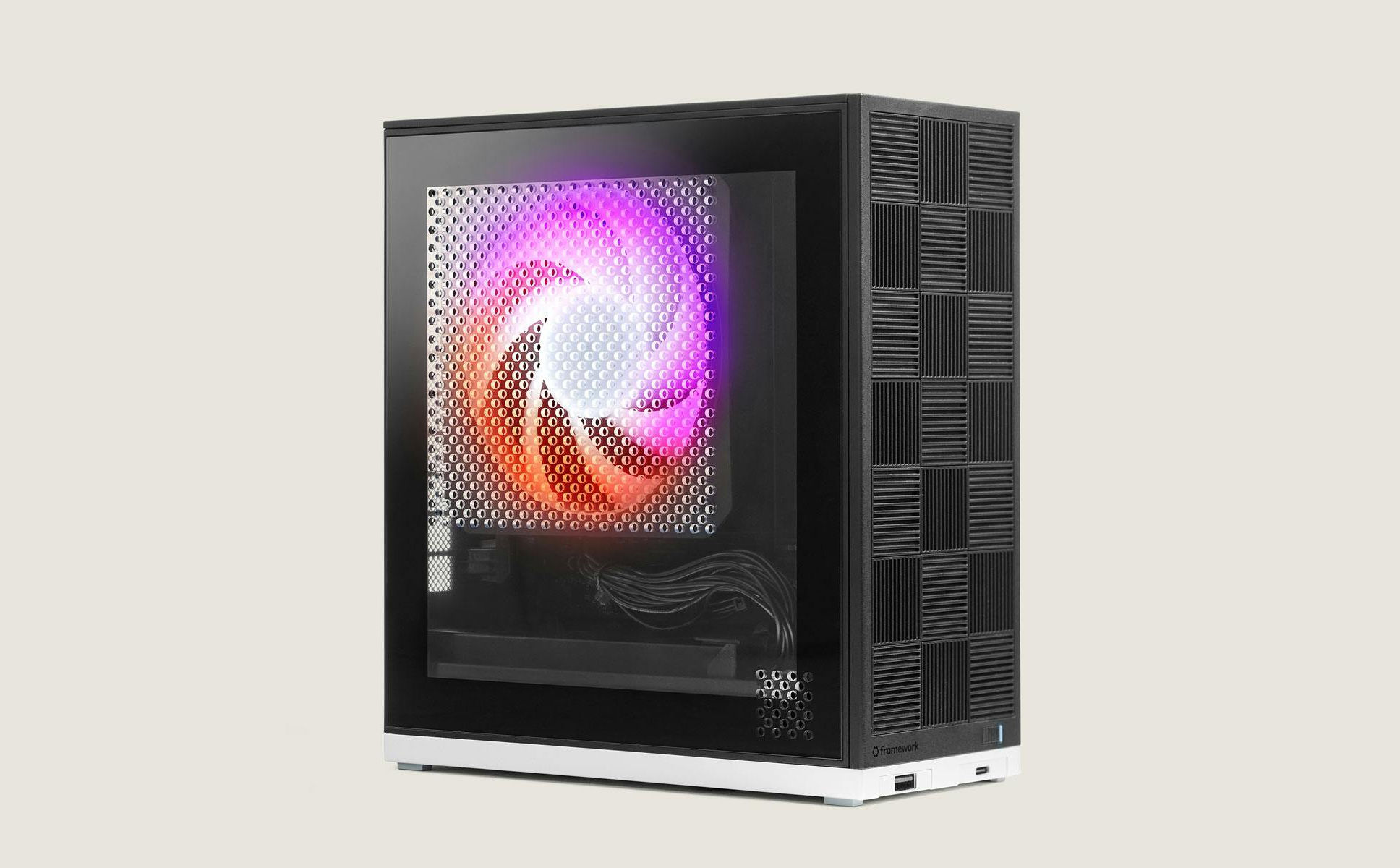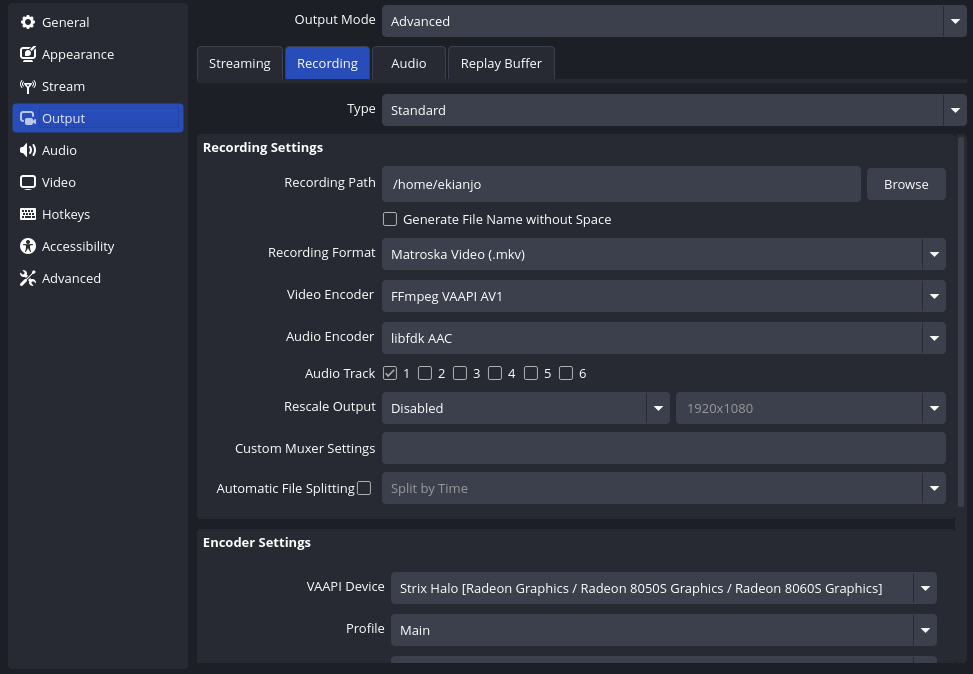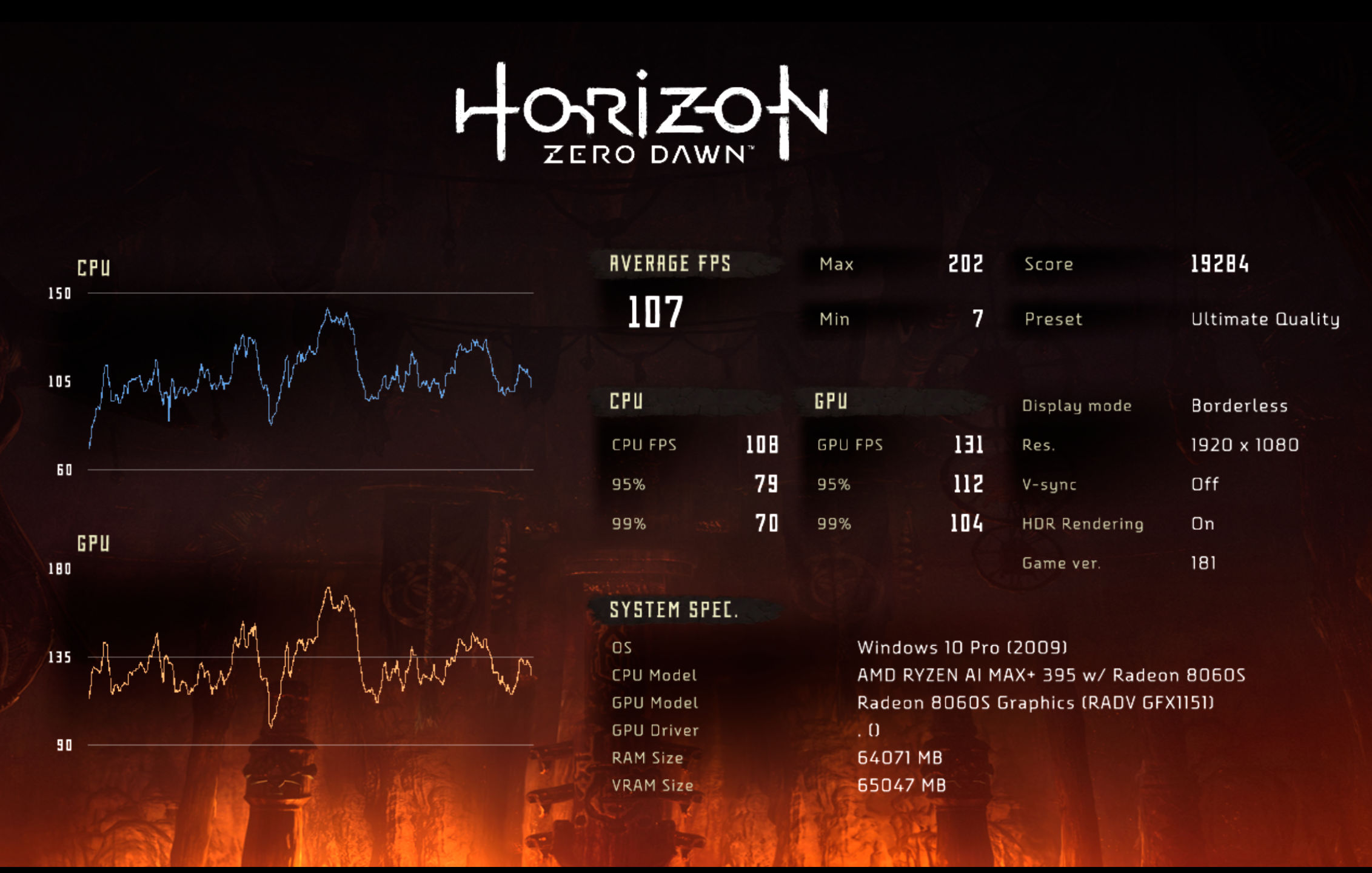Gaming on the Framework Desktop: Impressive
Following my first impressions of the Framework Desktop, I want to share with you all today more information about its gaming capabilities. My care here is mostly about real world use. I have decided to throw some well known, demanding games at it, and see how it performs. If you want a TLDR, this is it: this machine has the most powerful integrated graphics ever seen, and not by a small margin. This APU is really something. With this machine, you don’t need a discrete GPU to play recent games on this device, in 2025.

All of the below games were tested on Fedora 42, running on Steam, with Proton. This means Proton 9.04 at the moment.
Note that I recorded all the following videos on the device while the game was running. Using OBS. Don’t use the default options if you want to record things with a good quality. You can see below the OBS settings I have used.

Now with this out of the way, let’s look at a few games.
Real World Performance
Resident Evil 4 Remake
Runs very well on this machine. At this time I did not turn Vsync off. It ran at Ultra Details’ preset, with FSR Off.
The game stayed comfortably at 60 FPS at all times. No problem at all, and it looked great and played perfectly.
CyberPunk 2077
It’s not that recent anymore, but it’s often used to look at performance, as it remains a demanding game to fun at full details. In our case, we are running the game with the High Details Preset, again with FSR Off. Everything runs typically between 90 and 100 FPS at Full HD, at least inside buildings.
People have been asking about the performance in-game when driving around, and it does certainly impact the framerate. But we still get between 60 and 70 FPS in such situation, again in High Details.
So, perfectly playable at full details. Of course if you want the version with Ray Tracing, you should be using Nvidia hardware instead.
Doom: The Dark Ages
A fairly recent, and very demanding game (it runs on the Steam Deck, but its performance is very poor on the handheld). We reviewed it not too long ago. Very fun, and also very different from the other Doom games. This time, we run the game at the Medium details preset. Again, FSR off, Dynamic Resolution off. Here’s what the performance looks like in Full HD:
This time, the machine is hitting its limits. We are not too far from 60 FPS, but it can’t sustain that kind of framerate. Note that the framerate in this game does not really increase linearly as you move details down. It features some kind of software ray-tracing that makes frames fairly expensive. The Framework Desktop can handle it well if you turn FSR on and render the frames at a lower resolution.
God of War
We are starting to see the limits of the machine here. I went for Ultra Details. As usual no FSR, no Dynamic Resolution, Full HD. I had Vsync on. It stayed at a rock solid framerate through numerous scenes, but in an area with lots of trees and leaves (you can see that at the end of the below videoclip), the GPU chokes and the framerate dropped below 60 FPS.
Nothing catastrophic, but in this game if you stay at Ultra Details, you might want to use FSR to ensure smooth framerates at all times.
Death Stranding Director’s Cut
The second episode came out a few weeks ago. It’s a well optimized game that works pretty well on many devices (including the Steam Deck), but I decided to push things to Max details for this one. Same routine: Full HD, Very High Details, no Vsync, no FSR and no Dynamic Resolution. The Framework Desktop did not break a sweat.
Pretty much constantly above 100 FPS. You should expect the framerate to drop a bit in the forests, and when you are attacked by the shadowy creatures, but with this kind of buffer, staying at 60 FPS should be absolutely no issue.
Horizon Zero Dawn: Benchmark
I did not really play the game, but I used its benchmark, since it’s well known. I tried it at Ultimate Quality (the highest) at Full HD and we get more than 100 FPS on average.

The funny thing is that on this game, the CPU is the bottleneck! The GPU would be happy to run at 130 FPS on average, but the CPU throttles the framerate down. In any case, that’s another game that would be very enjoyable on this device.
Gaming Capabilities: A Powerhouse?
Well, considering it’s a very small device, that barely makes any noise, this is an impressive feat. You can throw demanding games at it, and it will perform (as claimed) like a mid-range discrete GPU. In games that are a few years old, that means you can run at max details, and more recent games may require you to lower details a bit and turn FSR on to keep things smooth. But that’s a very acceptable trade-off.
You may be wondering why I tested things at Full HD by default. Well, the performance you get a Full HD translates fairly well to what you can get at much higher resolutions (4k) if you activate FSR. Don’t expect to run games at native 4k resolution on this device (apart from low-end indie games, I guess) unless you drastically reduce details. The better solution nowadays would be to render at greater details in Full HD and use FSR for upscaling - it will look better and run much faster than trying to push all the needed pixels.
The Framework Desktop (and devices using the STRIX Halo APU in general) is a very impressive device so far. Very fast CPU, very decent graphics performance - and very interesting capabilities when it comes to running AI models (LLMs at least). If you were thinking of a gaming device (running SteamOS or Bazzite?) that would be console-like, small enough to put next to or behind a TV, this might be your best bet right now.
I will be covering the AI capabilities (and limitations) in more details in my next article about this device. Stay tuned.
